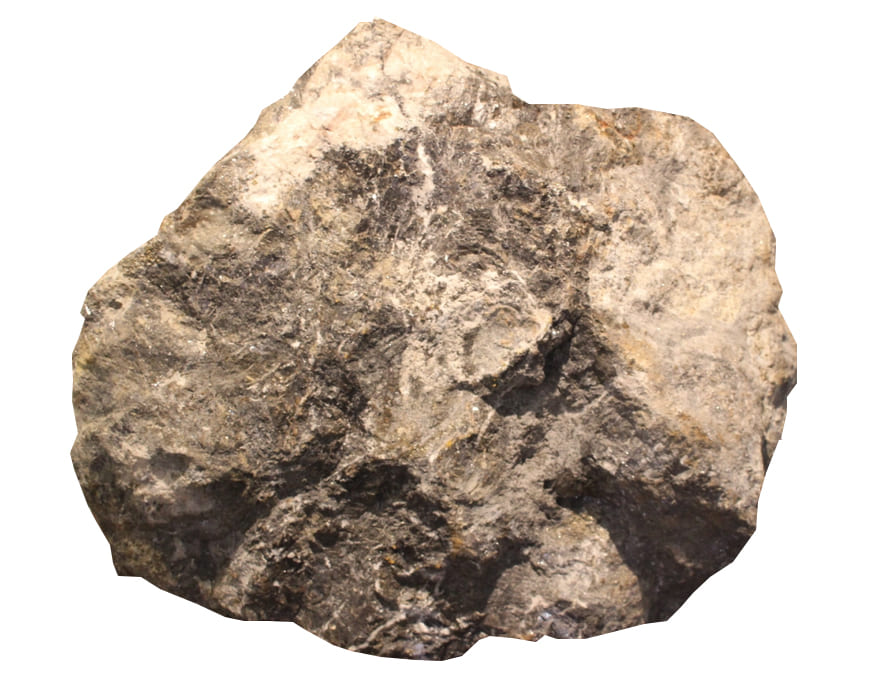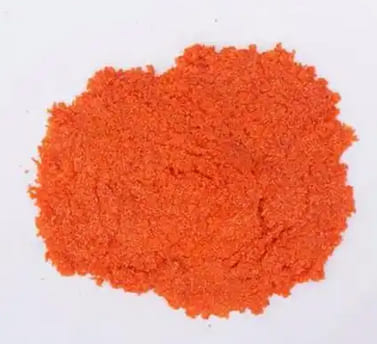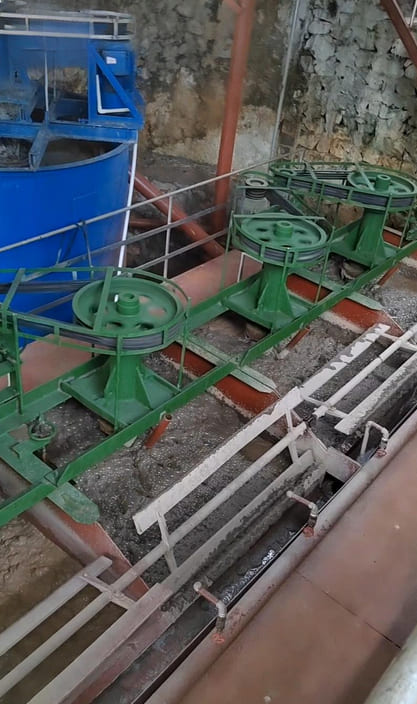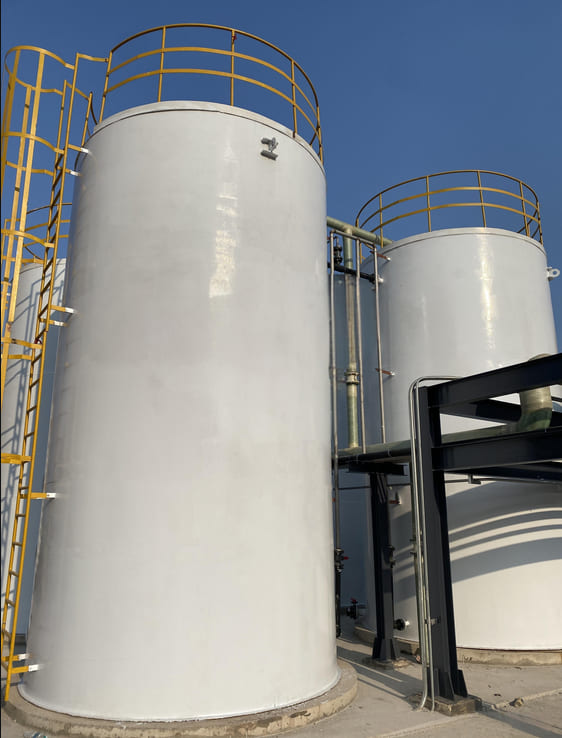Separating copper from lead in lead-zinc ores remains one of the toughest challenges in mineral processing. Traditional methods create environmental concerns, while new approaches promise cleaner solutions.
Effective copper-lead separation requires the selective inhibition of one metal while allowing the other to float. Traditional methods utilize toxic chemicals, such as chromates and cyanides, whereas modern approaches employ environmentally friendly reagents, including organic polymers and sulfites, to achieve similar results.
Let’s first examine the traditional methods and their drawbacks before exploring newer, more sustainable alternatives.

What Are the Traditional Copper-Lead Separation Processes?
For decades, mines relied on hazardous chemicals—despite their risks—because they worked reliably.
Two dominant traditional methods are:
- Dichromate method: Sodium dichromate selectively depresses lead, allowing copper to float.
- Cyanide method: Potassium cyanide inhibits copper minerals, while lead remains floatable in bulk flotation.
1. Dichromate Method
Dichromate is an effective inhibitor of galena and is often used to inhibit galena during the separation of copper and lead mixed concentrates. The mechanism of Na2Cr2O7(K) inhibiting galena is mainly due to the conversion of Na2Cr2O7(K) into Na2CrO4(K) in the weakly alkaline slurry, which then reacts with the oxidized galena surface to form hydrophilic lead chromate, increasing the hydrophilicity of the mineral and inhibiting galena.
Na2Cr2O7+NaOH=2Na2CrO4+H2O
Na2CrO4+PbSO4=PbCrO4+NaSO4
Two points should be noted when using this method:
(1) Dichromate can only react with galena that has oxidized its surface. Therefore, when using it, dichromate and the slurry should be stirred for a sufficient time to promote the oxidation of the mineral surface.
(2) If the copper mineral is primary copper sulfide, it can be well separated; on the contrary, if the copper mineral is secondary copper sulfide or there are relatively many secondary copper ions, then these copper ions will be adsorbed on the surface of galena, making it difficult for galena to be inhibited by dichromate, and the separation effect may be very poor.
2. Cyanide Method
Cyanide can inhibit sulfide minerals such as pyrite (FeS2), sphalerite (ZnS), and chalcopyrite (CuFeS2), but cyanide has almost no inhibitory effect on galena. It is often used to inhibit copper minerals during the separation of copper-lead mixed concentrates. The inhibitory effect of cyanide on copper minerals is mainly to dissolve the xanthate film formed on the surface, making the surface hydrophilic and causing the Cu2+ in the ore pulp to form complex ions.
ROCSSCu+2NaOH=Na[Cu(CN)2]+ROCSSNa
Since cyanide is highly toxic, the tailings wastewater containing cyanide must be strictly treated. Generally, it is no longer used or is rarely used in concentrators.
Key Issues with Traditional Methods
| Method | Effectiveness | Environmental Impact | Operational Risk |
| Dichromate | High (Pb depression) | Toxic (Cr⁶⁺ pollution) | Carcinogenic |
| Cyanide | Strong (Cu depression) | Highly poisonous (HCN risk) | Acute toxicity |
Why These Methods Persisted:
- Well-established protocols
- Consistent results in various ore types
- Cheap raw chemicals
Emerging Problems:
- Increasing environmental regulations
- Worker safety concerns
- Waste disposal difficulties
What Are the New Trends in Copper-Lead Separation?
Mines can no longer ignore sustainability—new methods reduce or eliminate toxic chemicals.
Modern approaches fall into two categories:
- Low-Cyanide/Low-Chromium Processes: Modified dichromate methods with organic additives (CMC, sodium sulfite, water glass).
- Cyanide-Free/Chromium-Free Processes: Alternative depressants like sulfite-starch systems, polyacrylate, or polyhydroxy thio-phosphates.
1. Low-cyanide and Low-chromium Process
Use some reagents and dichromate to synthesize combined inhibitors. The use of these combined inhibitors can achieve the effect of using dichromate alone, and can also minimize the amount of dichromate used, thereby reducing pollution.
(1) Dichromate + Carboxymethyl Cellulose (CMC)
A geological research institute successfully used a combined inhibitor of dichromate + CMC to separate copper and lead in a copper-lead-zinc polymetallic ore beneficiation test. The mine used to use the sulfurous acid-slurry heating method to separate copper and lead, but the high cost of using slurry heating seriously affected the overall benefits of the mine. Therefore, it had to find other new process methods. The institute was commissioned to conduct exploratory research on the ore. After a large number of tests, it was determined to use dichromate + CMC to suppress lead and copper flotation.

CMC is a high-molecular-weight organic compound. Its biggest advantage is that it is non-toxic. It has a strong inhibitory effect on lead ore, but when used in large quantities, it also has a certain impact on the flotation of copper minerals. The use of a combined inhibitor of dichromate + CMC combines the advantages of both reagents.
(2) Dichromate Sodium Sulfite Method
A low-grade copper-lead-zinc ore beneficiation plant has been using the process flow of “copper-lead mixed flotation, tailings zinc selection, and copper-lead separation”. However, due to the complex symbiotic relationship between copper and lead, it has been selling low-value products such as copper-lead mixed concentrate, which has seriously affected the company’s benefits. After more than a year of production practice, the adjustment agent was combined with “potassium dichromate + sodium sulfite” to suppress lead flotation and copper, and successfully achieved the separation of copper-lead mixed concentrate. A copper concentrate with a grade of 24.99% and a lead content of 5.48% and a lead concentrate with a grade of 54.34% and a copper content of 6.56% were obtained.
(3) Dichromate + Water Glass Method
A large number of experiments have confirmed that water glass, like CMC, can also replace part of the dichromate and serve as a combined inhibitor of galena in copper-lead separation. Since the use of water glass will change the pH value of the slurry, the pH value of the slurry should be maintained at 9.5-10.5 during use. In addition, attention should be paid to ensuring the appropriate water glass modulus.
Generally speaking, the process performance achieved by using the dichromate + water glass method instead of the dichromate method alone is similar. However, the cost of water glass is lower than that of dichromate. From an environmental perspective, the dichromate + water glass method reduces environmental pollution.
2. Cyanide-Free/Chromium-Free Processes
Although the low-cyanide and low-chromium process has achieved great success, with the advancement of mineral processing technology and the requirements of the times, the cyanide-free and chromium-free process will inevitably become the dominant trend. The following introduces several processes and technical conditions for separating copper-lead mixed concentrates using the cyanide-free and chromium-free method in experimental and production practices.

(1) Sodium sulfite + water glass + CMC
A copper-lead-zinc ore contains 0.60% copper, 2.43% lead, and 5.10% zinc. The copper-lead mixed flotation process is used on site, with butyl xanthate and ethyl xanthate as collectors, and lime and zinc sulfate as depressants to preferentially float copper and lead. After the copper-lead mixed concentrate is dedoped with activated carbon, potassium dichromate is used as a lead depressant and ethyl xanthate as a copper collector for copper-lead separation and flotation. After one roughing, three finishing, and two sweeping operations, the resulting copper concentrate contains 20.30% copper and 6.50% lead, and the lead concentrate contains 59.68% lead and 3.40% copper. Although the main grades of the copper concentrate and lead concentrate meet the concentrate requirements, the mutual content of lead and zinc is relatively high. After many experiments and studies, sodium sulfite, water glass, and CMC were used as a combined inhibitor to replace potassium dichromate to inhibit galena, and Z-200 was used as a collector for chalcopyrite to separate copper and lead. The final copper concentrate contained 23.30% copper and 3.30% lead, and the lead concentrate contained 64.66% lead and 0.50% copper, achieving the separation of copper and lead.
(2) Sulfite-starch method
Starch is a high molecular compound that can produce various modified starches by reacting with different reagents. Since starch can react with hydroxides on the surface of chalcopyrite and galena and adsorb on the mineral surface, copper hydride and lead hydroxide are generated in different pH ranges. By selecting an appropriate pH value and using starch and xanthate, chalcopyrite and galena can be separated.
The sulfite-starch method is used to separate copper and lead mixed concentrates by first introducing sulfur dioxide to adjust the pulp pH to 4, then adding lime to adjust the pulp pH to 6, and then adding starch to suppress lead and float copper (sphalerite is also suppressed). This method has been applied in the Brunswick Concentrator in Canada (using 295 g/ton of sulfur dioxide and 90 g/ton of starch), and the Hanawa Concentrator in Japan also uses this method.
(3) Sulfurous acid-slurry heating method
Sulfurous acid has no inhibitory effect on chalcopyrite, bornite, and chalcocite, but has a cleaning effect on the surface of copper minerals and also has an activation effect. Sulfurous acid has a strong inhibitory effect on surface-oxidized galena when the pH is > 5.
The copper-lead mixed concentrate is heated to about 60°C with steam. In acidic or neutral slurry, the floatability of chalcopyrite is improved, while galena can be inhibited. In view of this, the slurry is heated to 60°C and the pH value is adjusted to 5-7 by using the sulphurous acid-slurry heating method to achieve heated separation of the copper-lead mixed concentrate. This method does not require the addition of reagents; the resulting copper concentrate has a higher grade and can also reduce pollution to the environment.
Japan’s Huagang, Songfeng, and other concentrators, as well as China’s Bajiazi concentrator, have all achieved good results by using the sulfurous acid-slurry heating method.
(4) Sodium thiosulfate + ferrous sulfate
The single flotation process currently built in a large mine can only produce copper-lead mixed concentrates and cannot achieve copper-lead separation. In response to this situation, a mineral processing test study on the separation of copper-lead mixed concentrates was carried out, with the aim of finding an effective process technology for copper-lead separation.
After a long period of experimental research, sodium thiosulfate + ferrous sulfate was finally used as a combined depressant to suppress lead flotation and copper, successfully achieving effective separation of copper and lead. The process uses Na2S for de-doping, sulfuric acid slurry adjustment (the appropriate slurry pH value is about 5.5), and sodium thiosulfate and ferrous sulfate as combined depressants for copper-lead flotation separation. The final copper concentrate grade is 20.01%, lead content is 2.66%, and copper recovery rate is 90.66%; the lead concentrate grade is 45.51%, copper content is 1.27%, and lead recovery rate is 96.56%.

(5) Sodium polyacrylate
Sodium polyacrylate is a linear polymer compound soluble in water. It can be used as a flocculant when its molecular weight is large, and as an inhibitor, dispersant, and water treatment agent when its molecular weight is small. It is not widely used in mineral processing, and there are only a few reports on its application in oxide ore processing.
A research institute used sodium polyacrylate to separate chalcopyrite and galena. They conducted separation tests on artificial mixed ore samples of chalcopyrite and galena and copper-lead mixed concentrate. The results showed that sodium polyacrylate has a good selective inhibitory effect on galena in alkaline slurry and is an effective inhibitor for copper-lead separation. Preliminary small-scale tests on actual ores showed that the sodium polyacrylate method can obtain separation indicators similar to those of the sodium dichromate method. It is possible to apply it to production, but further investigation and improvement of this new separation method are needed.
(6) Polyhydroxythiophosphates
Using a certain industrial by-product [HCCH2(CHOH)3COCH20H] and phosphorus pentasulfide as raw materials, reacting under appropriate conditions, and neutralizing with NaOH to obtain a polyhydroxythiophosphate inhibitor. It is used in copper-lead separation to inhibit galena.
This reagent was used in flotation separation tests on chalcopyrite and galena, as well as a copper-lead concentrate, from a lead-zinc mine. The copper-lead separation process at the mine’s concentrator utilizes a lead-inhibiting copper flotation process, but has long struggled with poor separation performance. The copper concentrate is of poor quality and high lead content, resulting in a loss of 0.77 tons of lead for every ton of copper produced, severely impacting the economic efficiency of the copper-lead separation process. The test results demonstrate that the synthesized polyhydroxythiophosphate exhibits a strong selective inhibition effect on galena, significantly superior to potassium dichromate. This inhibitory effect can be used to improve copper-lead flotation separation, enhance copper concentrate quality, and reduce concentrator reagent costs at the concentrator.
Conclusion
Traditional copper-lead separation relied on effective but hazardous chemicals, while modern methods prioritize environmental safety without sacrificing efficiency. Continued innovation in reagent chemistry, process control, and alternative extraction methods will shape the future of sustainable mineral processing.
